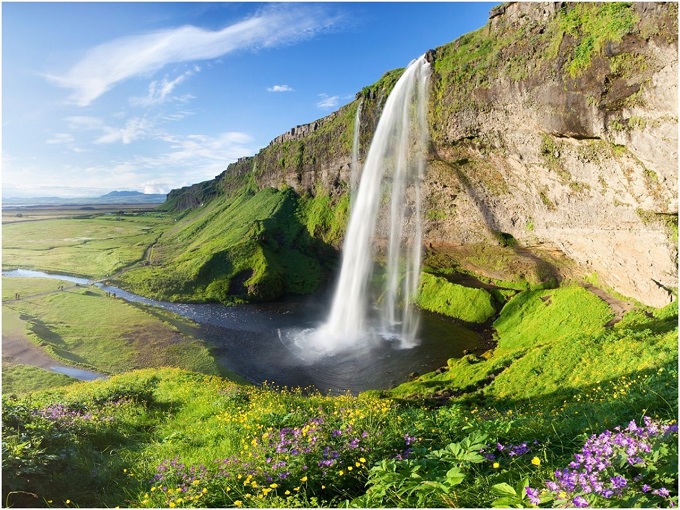My feet are badly blistered from earlier activities, so focused the remaining time on a small corner of Iceland, and did my best to keep off my feet. To this end, the Icelandic horses were a godsend. These wonderful animals have five distinct gaits — of which the unique tölt allows them to flow over obstacles like caterpillars.
The area I chose, along the southern coast, encompasses the landscape of Njál’s Saga, and has some of Iceland’s most spectacular scenery. I visited the village of Oddi, because it was there that Snorri Sturlusson wrote the Heimskringla, but the ancient monastery that was a great seat of learning in the middle ages is long gone. The present church in modern. But east of there, a dead-end side road leads into the valley of the Krossá, a place of extraordinary beauty. It is hemmed in on three sides by glaciers, and by the mountain ridge known as Þórsmörk, which from its name (“Thor’s Forest”) must have once had something more substantial growing than its current shrubs and birches. The southern flank is Eyjafjallajökull, whose eruption grounded Europe´s air travel for a week in 2010. The trail which I wanted to take no longer exists. The fissure of Fimmvörðuháls, which opened up in the earliest stages of the eruption cuts across it.
Things are quiet, now. I had no opportunity to see molten lava. But the tortured landscape was eloquent enough. Words would fail me, I’m sure, if I were to witness an eruption. But the Icelandic composer Jón Leifs, was able to communicate something of it from direct experience in his orchestral piece Hekla (1961).
This last couple of days, I’ve seen much that was beautiful, but I am very tired, my descriptive powers are failing, and I must fuss with things to catch my flight home.

0 Comments.